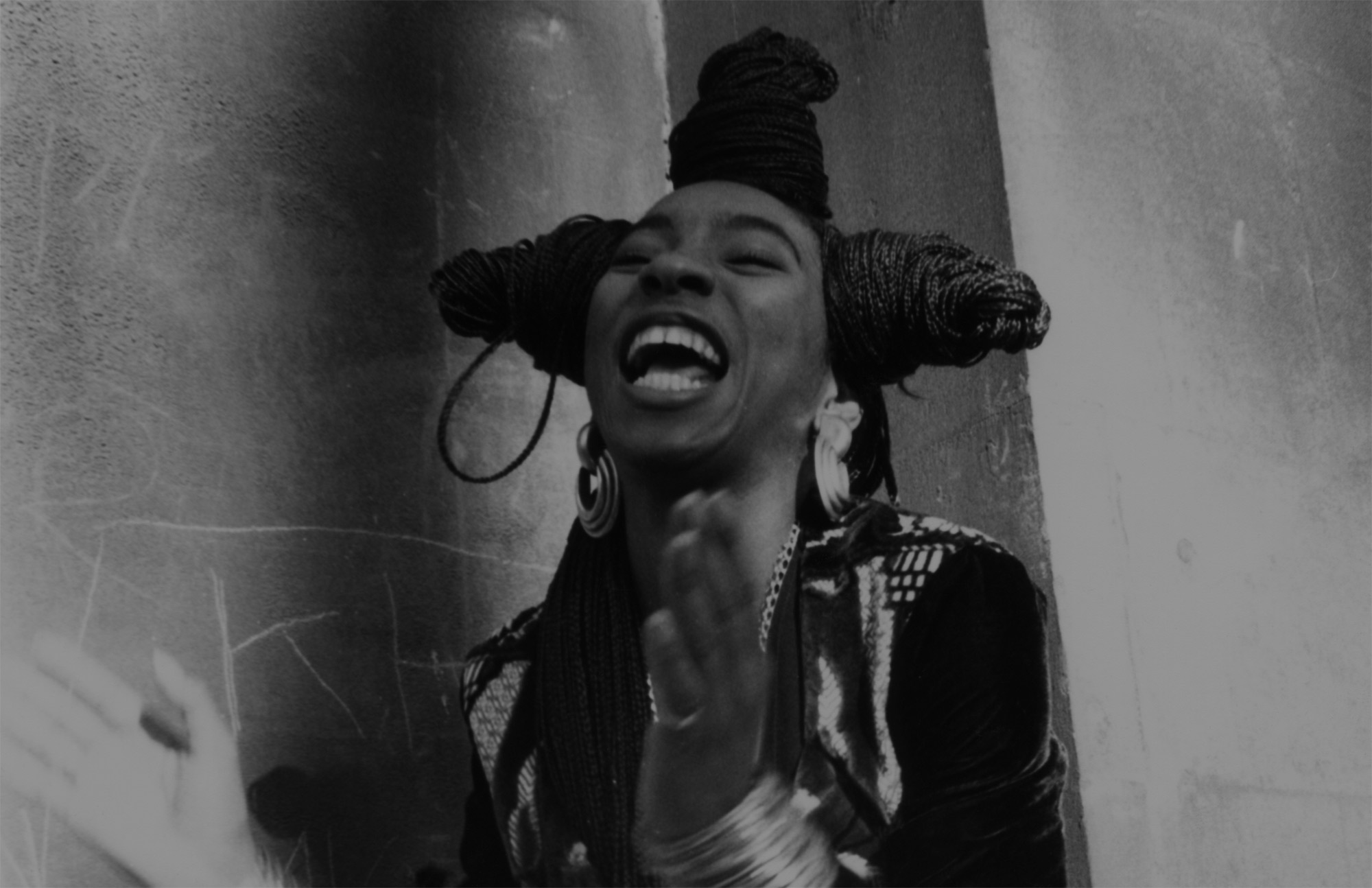Interview: Music Photographer Janette Beckman
From punk to hip hop, she’s documented some of the most vibrant musical movements of the past four decades
Few photographers can claim to have documented the beginnings of punk. Fewer yet captured the burgeoning of hip hop. To have done both is unheard of. And yet, photographer Janette Beckman is one of the few. As a photographer for UK music magazines Melody Maker and The Face, she witnessed the birth of transformative musical movements – repeatedly.
Simply being there isn’t the whole story, of course. What truly makes Beckman a great photographer is her ability to capture her subjects unguarded. By virtue of her disarming personality and fascination with the movements she documented, Beckman has consistently caught cultural icons such as Afrika Bambaataa, The Sex Pistols and Keith Haring in an honest and genuine way.
“It’s harder these days, in a way, because of the internet,” admits Beckman. “You would think it would help, but I feel because everything is so immediate rebellious cultures don’t have time to marinate. Somebody has an idea, and suddenly there it is, up on the internet, and somebody has already made a product and they’re selling it in a store. Things don’t stay underground for very long.” But Beckman, for one, is undeterred: “I’m always looking, she said.” “That’s my passion – looking for these things and finding them.”
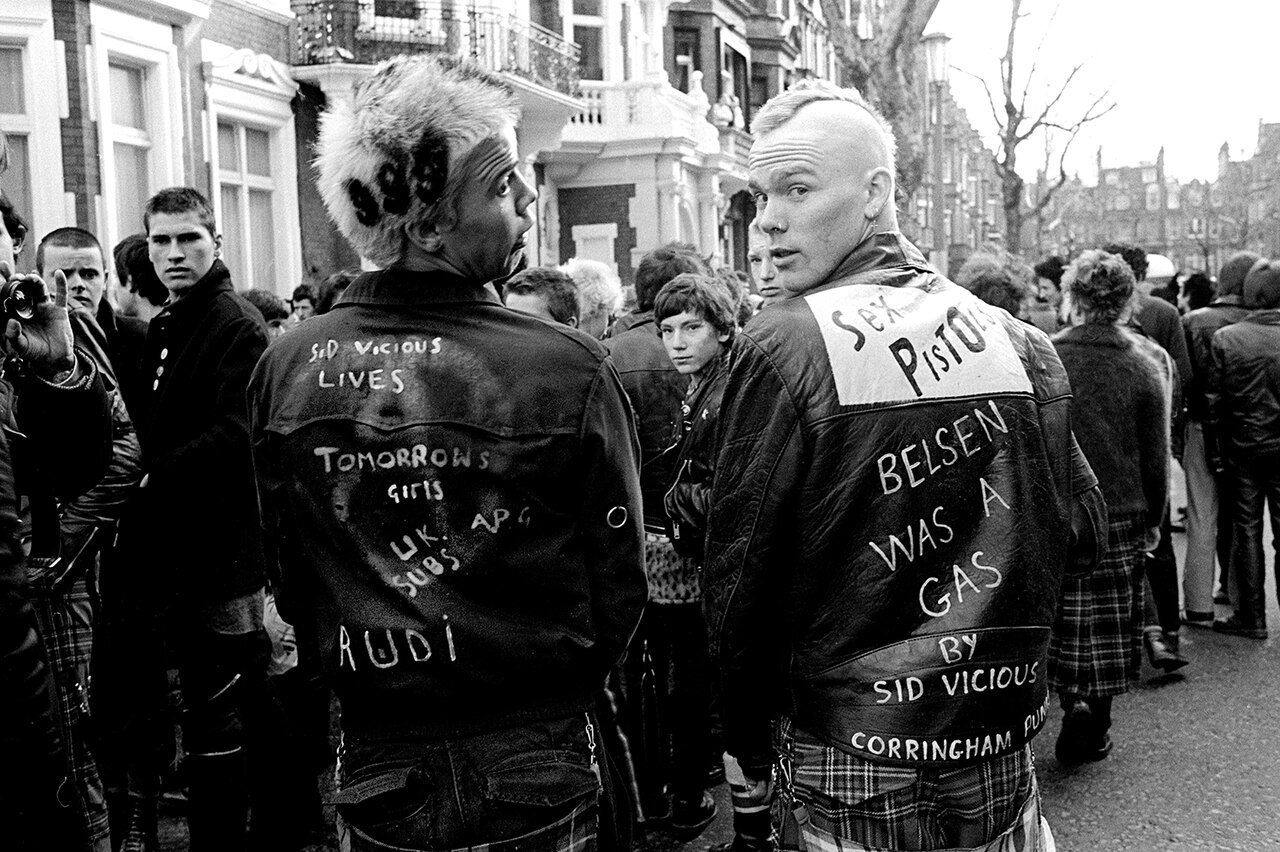
What were the circumstances behind the picture?
It was taken after Sid Vicious died. They had this huge memorial march in London. It was this really amazing thing, because all sorts of youth cultures – skinheads, rockabillies, two-tone, punks – turned out in respect for Sid. Sid was a character that everybody knew. Everybody was terrified that there was going to be some kind of riot. There were as many police as there were demonstrators. It was a crazy day, and everybody turned out in their best punk finery. I have shown this photograph, particularly in America, and I have had people tell me it is disgusting because it says, “Belsen was a gas.” But they were punks, they were trying to be as rebellious and shocking as possible; so, you know, as far as this picture goes, I kind of love it, it sort of says it all.
You first documented hip hop as early as 1982. Did you see the same kind of energy in hip hop as you did in punk?
I guess it’s the same thing. Hip hop is a culture that comes out of working class people, who didn’t have a lot, and who didn’t have a future. They hadn’t really voiced their opinions. Hip hop was giving a voice to the voiceless. They were just talking about their lives in song, just like the punks had done before. ... It was so crazy and so amazing, and really fresh. It seemed like it was going to be a renaissance or something, because it encompassed so many elements, all at the same time.
How did you first become aware of hip hop?
In 1982, the first hip hop show came to London. We had never seen hip hop; we had no idea what hip hop was, but I had heard about it, because it was in Paris before. ... I went to cover it for Melody Maker, the magazine I was working for, and I went to this hotel where [the musicians] were all staying, and I saw all these people that just looked really different. I got a picture of these two guys who tagged a dumpster. It turned out to be Future and Dondi, two of the most iconic graffiti legends. At Christmas, I went to visit a friend who I knew from art school that was living in New York. Every time you got on a train, it was covered in graffiti. Everytime you get off the train, there’s some kid breakdancing on a piece of cardboard. It was really fascinating to me.
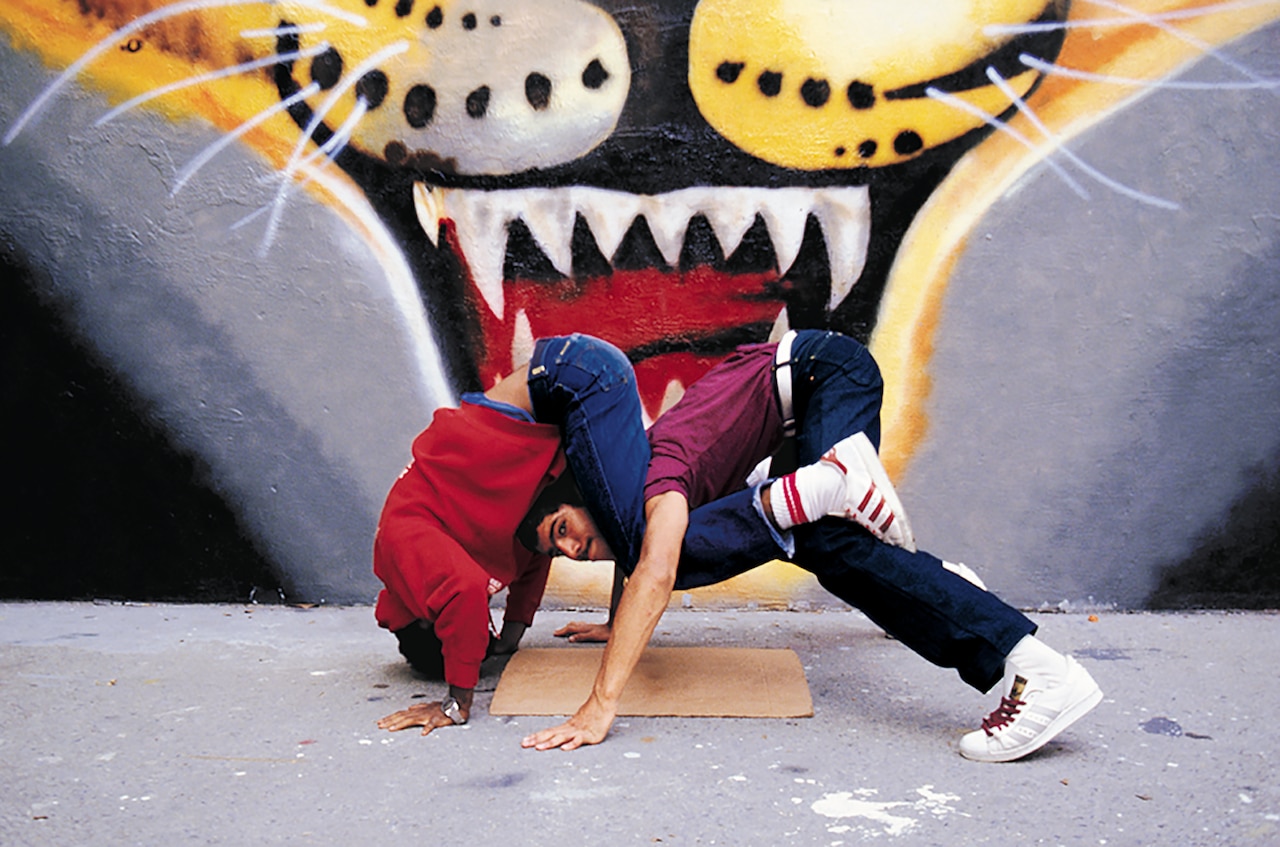
Your photo of the Rock Steady Crew is a perfect example of the way in which you captured your subjects in a very genuine form. How did you shoot them?
I shot this for The Face, up in Harlem, I just went up there. I was probably there the whole afternoon hanging out with them. Their manager was a British woman named Kool Lady Blue. She’s great, and she manages Afrika Bambaataa to this day. There were these beautiful murals, and this is so typical of breaking back in the day, they just have this little piece of cardboard and they’re just doing the most extraordinary stuff... This move, I think it’s called the Caterpillar, it’s just so strange, so unusual, it’s amazing. So, I was just like, “Do what you do, and I’ll capture it.”
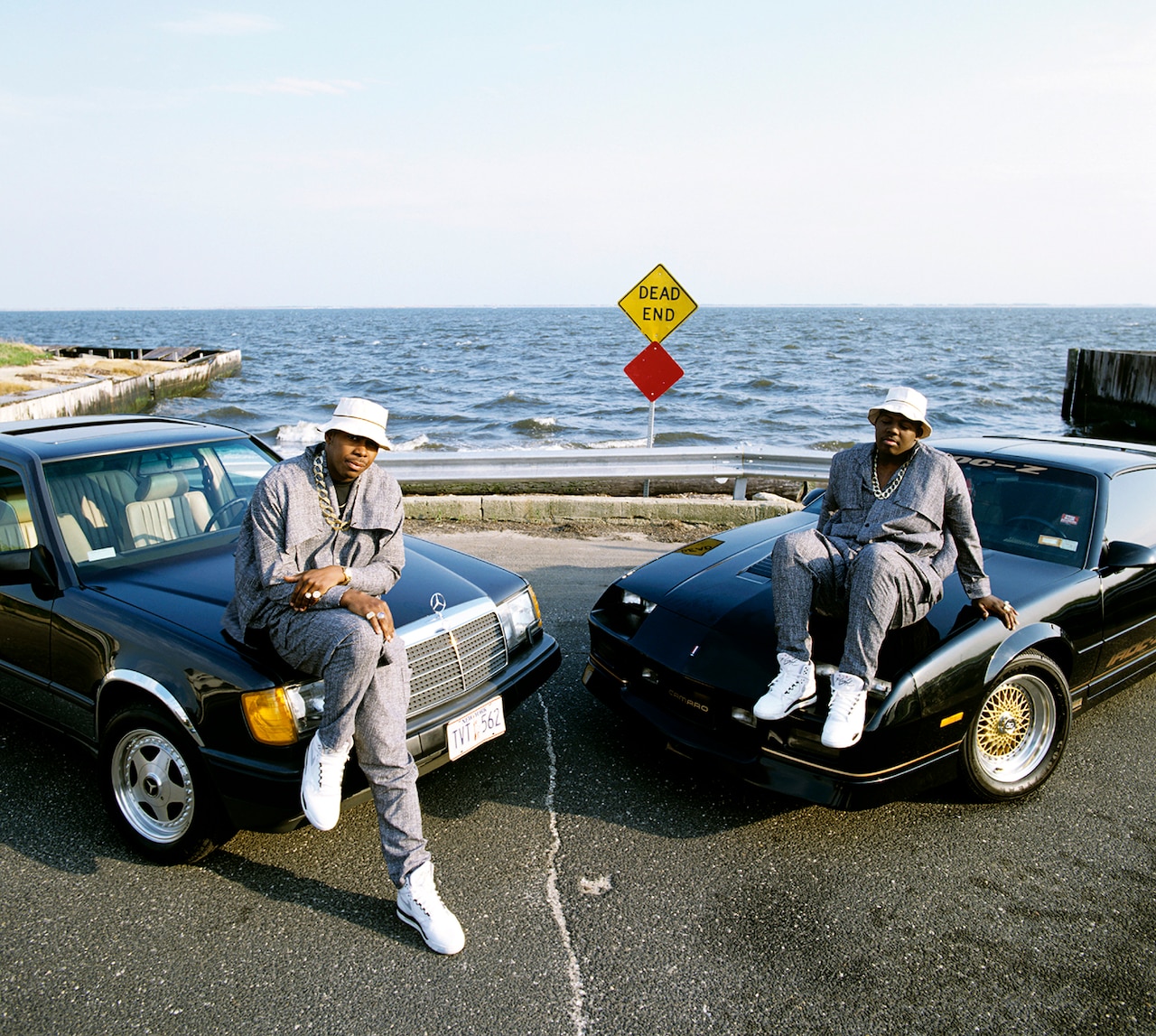
Was the shoot similarly relaxed when you captured EPMD for the Unfinished Business cover?
I think this is the third album cover I had done for them. They were on Sleeping Bag [Records]. ... I was sort of the go-to photographer for Sleeping Bag, because I had done some shoots for the art director.
For this particular shoot, [EPMD] chose the location. They knew the spot, so they told me, “Go down this road, you’re going to hit the water, and we will be there at noon.” So, I got there at noon, and I had an assistant with me – and this was way before cellphones or pagers – and they didn’t turn up.
It was winter, probably November, and the sun would set early. Around four in the afternoon, I said, “We have to do something. They haven’t turned up.” So we drove and found a phone booth, and we called the label, who said, “Oh yeah, they are in the Bronx getting their rims shined.” I said, “Shit, it’s going to be dark in 20 minutes!” I was freaking out – the sun was sort of going down.
Finally, I hear them coming down the road; they have V-8 engines, I hear that roar. So, they pull up, and I knew we had 20 minutes to get the album cover shot. They just sat on the hoods, just like that. And I looked at them, and I looked at what they were wearing, and I had my camera all loaded up, and I was like, “Wow, this is great.”
But, honestly, I thought, “Why are they wearing ladies’ pajamas?” I didn’t really know what the outfits were. I could see the chains, I could see the sneakers. Little did I know that this was going to be the new style – they were just so hip. We never had hair and makeup or anything. [They] came in the clothes that [they] wore, and that’s why these are such documents of time. I got the shot, and that was it.
Do you see your work as a collaboration with your subjects?
To me, a portrait of somebody is a collaboration between me and the person – and it’s not about me. I like to go out with my camera, meet them on the street where they live, find a good spot that they’re familiar with, take a picture of them in their own environment, where they’re comfortable. I want to get something out of them that’s about them; that’s my thing. I don’t believe in taking the character and the feeling out of peoples’ faces or clothes.
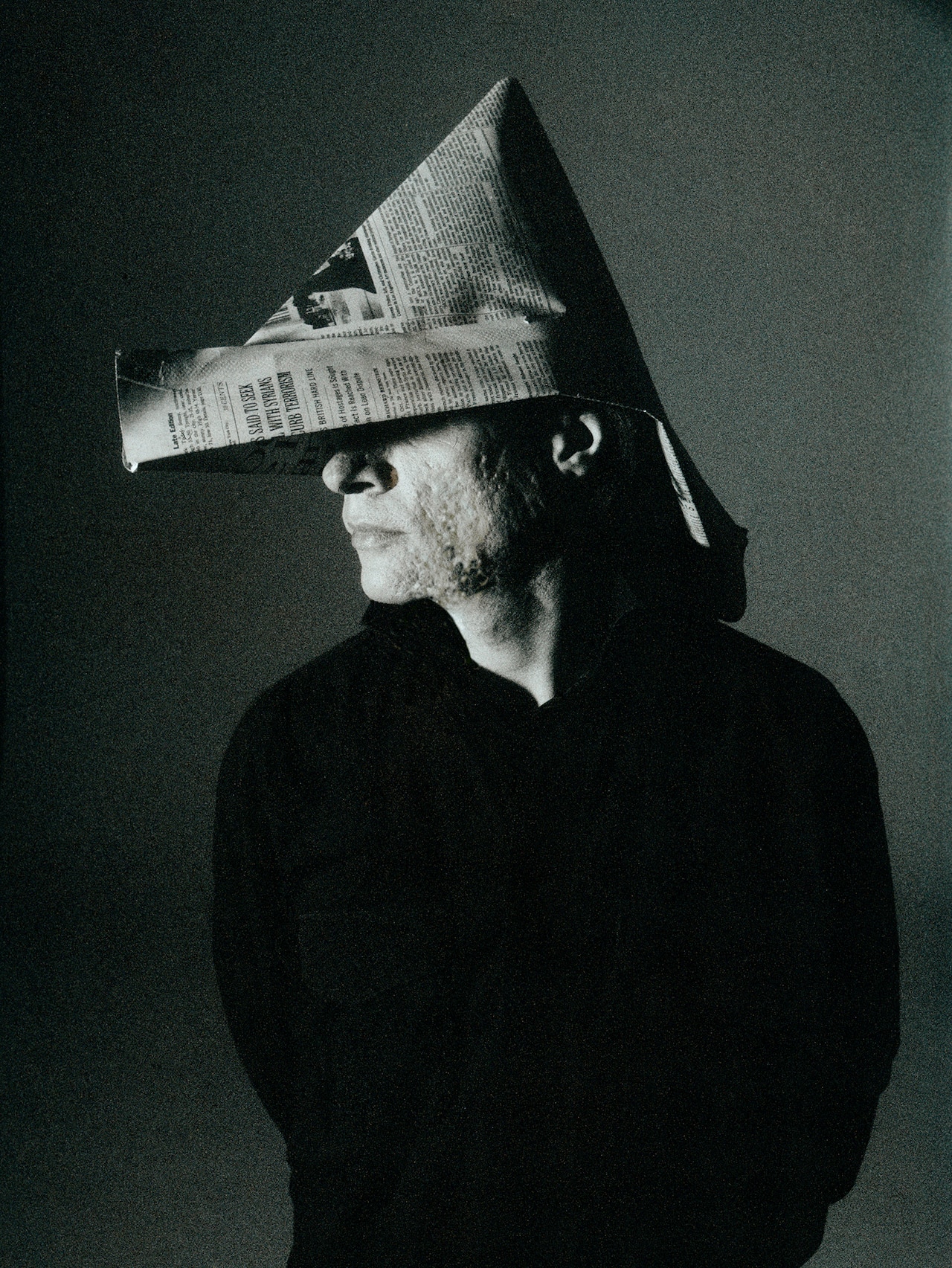
You captured Arthur Russell’s shy sensibility in the image that became the cover for his album, Another Thought. How did he come to pose in that way?
He came around to my studio on Lafayette Street. I knew his music, and I knew “Wax the Van,” of course, because I like house music. He was very shy, and he had very pock-marked skin, and I could tell he was a little sensitive about the whole thing.
We had this idea to do a hat, and I guess he had a copy of the New York Times, and one of us picked it up, and ended up making this hat, and he put it on, and I had my lights all set up, so it was just like, “Stand here,” and I took the picture.
I knew that was the picture. We took a bunch of other pictures that day, but I knew that that was going to be the hot picture. The Face was a really iconic British style magazine, and they loved the picture so much that it ran full-page. When the magazine came out, I got it, and I saw Arthur on St. Mark’s Place, and I said, “Look, Arthur, you are full page!” I think he was really a little embarrassed, There he was, full page, wearing this crazy hat. It’s a big deal, being full page in a magazine, I think he was a little shy about the whole procedure.
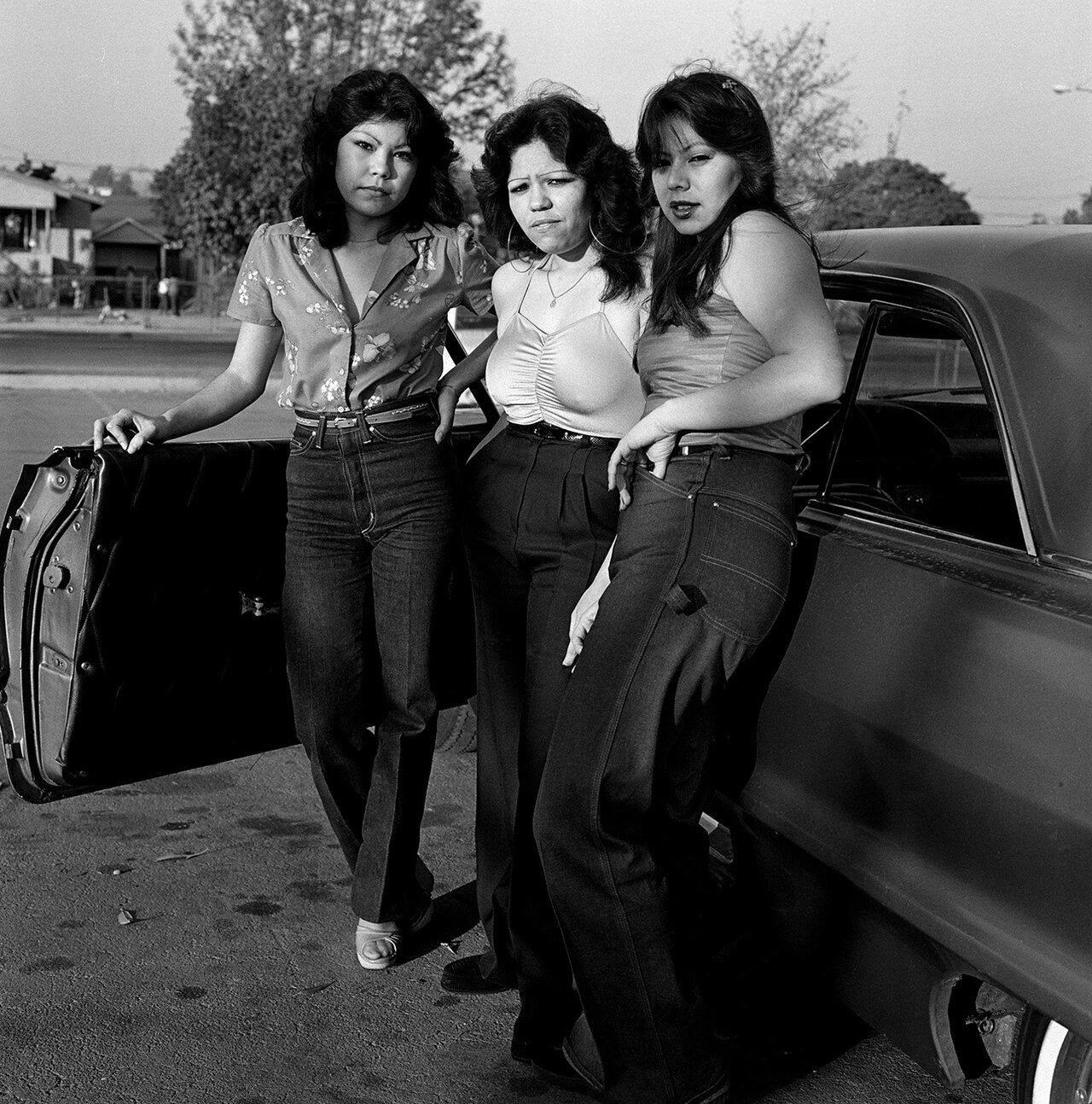
You have described the similarities between punk and hip hop by saying, “Both movements were created in a spirit of rebellion against society.” Did you find a similar energy when you were photographing the Hoyo MaraVilla gang?
I guess I am just attracted to people who are thinking for themselves, not following the norm, doing something different with their lives, thinking outside the box – especially people who maybe don’t have a lot of money, who are forced to make their own resources. I guess I am attracted to that kind of slightly rebellious lifestyle.
I was in L.A. for one summer, staying with a friend, and an article came out in the L.A. Weekly about this East L.A. gang called Hoyo MaraVilla. They had no pictures, but something about this really fascinated me. I was fascinated by the whole lifestyle and the way they dressed – I had not met people like this.
So I tracked down the writer, and asked him if he would take me and introduce me. I had a box of prints that I had made, basically of punks and mods and people I had photographed in London. So he took me to this dusty park, called Hoyo MaraVilla. The park was dry, with helicopters buzzing over the whole time. He introduced me to a few of these people, and I showed them my box of prints. I explained to them that they were gangs from London, England, where I was from. And I asked, “Can I come take picture of you and hang out?”
They were really cool about it; they wanted to look at all the pictures and I ended up just going back and forth there the whole summer and taking pictures. They would take me to meet their moms. One time, we nearly got arrested because they were graffiti-ing on a wall and the cops came. One of their mothers hid me in the cupboard in her house. It was really crazy.
One day someone would say, “Do you want to come see my machine gun?” What I didn’t know was, the Hoya Maravilla gang is one of the toughest gangs in Los Angeles. They’re known for killings; they’re really dangerous. They were just super nice to me. I think, sooner or later, people in the neighborhood found out that there was this crazy British photographer hanging out every day. People would come down and I would make portraits of them.
